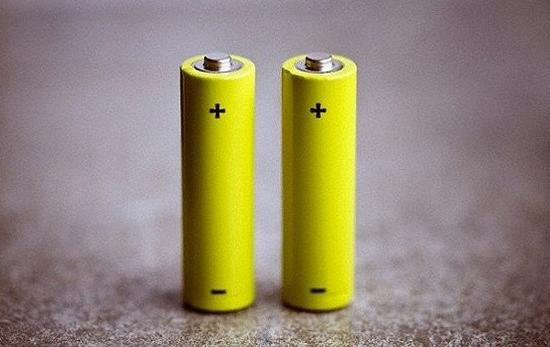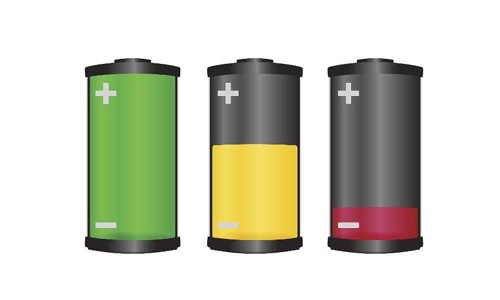18650 Battery Poles Quest
Dec 18, 2019 Pageview:2609
Which end of a 18650 battery is positive?
The 18650 batteries are unique Li-ion rechargeable batteries. They have a 3.7V voltage and have capacities between 1800 mAh and 3500 mAh. The average charge time for the 18650 battery is approximately four hours. The 18650 batteries are larger than the AA batteries. They are used widely in the robotics world.
Most 18650 batteries last between 300 and 500 charge cycles. However, the lifespan of these batteries can be extended beyond those numbers if you charge the batteries regularly before they completely discharge. Since the 18650 battery is a LiPo battery, it will degrade over time, which unfortunately is an irreversible process. With proper usage, you can get over a year or two of life from your battery.
There are two kinds of the 18650 batteries on the market. The Flat Top, and the Button Top kinds. The Positive pole differs from one kind to the other.
In the Flat Top kind, the positive pole of the battery has the shape of a flat surface.
In the Button Top kind, the positive pole of the battery is that pole that is protruding.
What materials are in 18650 battery poles?
The 18650 batteries are Lithium-ion rechargeable batteries. Therefore, they follow the same design of the Lithium-ion batteries.
The Anode
The majority of the lithium ion batteries used Graphite as a material. The graphite used in the anode is either synthetically produced, which is called artificial graphite or mined from the earth, which is called natural graphite. The graphite is then processed before being used on a copper foil, which serves as the Anode in the Li-ion battery.
Lithium is used as ions salts dissolved in the electrolyte of the Li-ion batteries; however, lithium can be used as a material for the anode itself as well in some batteries.
In the Li-ion batteries, the anode material must meet some requirements like:
The material must be of good conductivity and porosity.
It should be lightweight and durable.
It must be of low cost to keep batteries cheap.
The material must match the voltage of the cathode of the battery.
The Cathode
There is more than one material option that is being used when manufacturing the cathode of the Li-ion battery. The material used in the cathode of the Li-ion batteries must be of extreme purity with no unwanted metal impurities. The cathode in the Li-ion batteries is a mixture of Lithium and other metals. While the anode material in the Li-ion battery is well optimized, the cathode material is open to enhancements, and today's researches are focused on this specific area.
The cathode of the Li-ion batteries has active materials. It is composed of Cobalt, Nickel, and Manganese presented in a crystal structure that forms a multi metal oxide material. Lithium is then added to the mixture at the final step.
How do you protect 18650 battery poles?
The cycle in a 18650 battery is calculated when a battery is charged and discharged. The 18650 batteries are charged up to 4.2V and down to between 2V and 3V, the value depends entirely on the cell's cut-off voltage specification.
Discharging happens the minute you start using your batteries. The 18650 Lithium-ion batteries are voltage-dependent. If you do not know your voltage, do not attempt to charge your battery. Doing so may result in dangerous repercussions.
Before using the 18650 battery you need to test the voltage of it. That way you can determine whether the battery can be used for the purpose you want or not. Beware that using the battery without testing the voltage may result in catastrophic results.
To test your batteries you will need the following equipment:
Voltmeter
RC charger
4 trays
Beware that the 18650 batteries are LiPo type batteries, so when charging or discharging you have to choose the LiPo option in all the devices.
When using used cells, testing their voltage is a must, if any battery shows a value that is below the 2.5V then you need to dispose of this battery immediately as it is not safe for usage. When charging a used cell it is safer to set the charging late low (e.g. 0.3 amps) and the voltage to 3.7V and then start charging.
Some 18650 batteries that are cheap come without a protection circuit. Protecting the 18650 is extremely important as problems like over-discharging or overcharging can be dangerous to both the device and the person using that device. Here we will teach you how to make a protection circuit that is capable of protecting your 18650 battery.
You will first need to get some tools and parts to start creating the circuit.
The tools and parts needed are:
A Voltmeter
Soldering iron
Wire cutter
Some wires
Any old phone battery
Salvage the circuit
Grab your cutting tool, and then open up the old phone battery. Be extremely careful to not short the circuit it may cause an explosion.
Now, start cutting the input wires of the circuit.
Check out which input is negative and which is positive.
There will be three output pins, one is the signal pin, and the other two are the positive and the negative outputs.
After succeeding in salvaging the circuit go and solder it to the 18650 battery.
Soldering the circuit to the 18650 battery
Prepare four pieces of copper wires
Heat up the soldering iron
Solder together the 18650 battery using the copper wires.
Pay extreme attention to the polarity, and try your best to not short the battery, it may cause a fire.
Now, it is time to test your circuit.
Testing the protection circuit
Grab the voltmeter.
Test the output voltage.
If it is working OK, then congratulations you have created a protection circuit to your 18650 battery and can start working with it.
- Prev Article: History of the Lithium Ion Battery-History, Development and Future
- Next Article: 18650 Rechargeable Single Battery Analysis
Leave Message
Hottest Categories
-
Hottest Industry News
-
Latest Industry News












